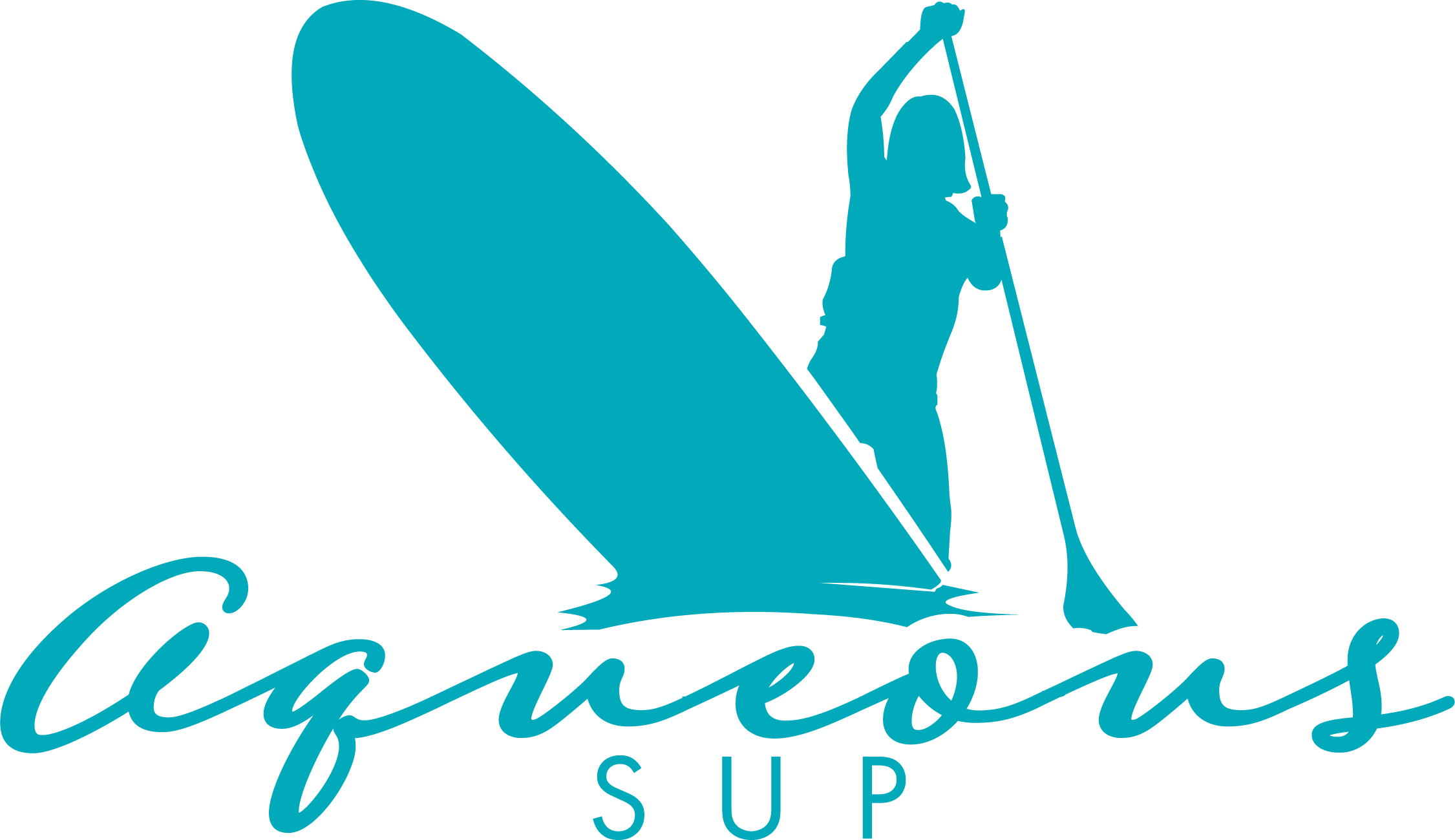From wobbly starts to sore shoulders and zigzag strokes, we’ve all had those early paddling moments. Paddleboarding may look simple from shore, but it’s a dynamic, skill-based sport that rewards solid technique and consistent practice. At Aqueous SUP, we believe recognizing and correcting common SUP mistakes is one of the most empowering steps you can take as a paddler.
Whether you’re stepping onto a board for the first time or brushing up after a break, this guide will help you build a stronger foundation—one adjustment at a time.
Mistake #1: Holding the Paddle Backward
The Fix: Flip the blade so it’s angled away from you.
This is one of the most common mistakes—and one of the easiest to fix. Hold the paddle with the blade angled forward, and it will enter and exit the water cleanly—improving glide and reducing drag. Proper blade orientation also supports good posture and reduces unnecessary strain on your joints.
Even experienced paddlers often flip the blade the wrong way during a rushed launch—so it’s always worth double-checking. Organizations like the Professional Stand Up Paddle Association (PSUPA) reinforce paddle orientation as a foundational skill in early instruction.
Mistake #2: Locked Knees
The Fix: Soften your stance—bend your knees slightly and stay loose through the hips.
Standing stiff with locked knees limits your ability to respond to movement and balance shifts. A relaxed, athletic stance with knees slightly bent keeps you grounded and adaptive, especially when wind, wake, or boat chop enters the picture.
We introduce this early in our SUP Basics Course to help paddlers feel stable and confident from the first stroke.
Mistake #3: Using Arms Instead of Full-Body Power
The Fix: Drive from your legs, rotate through your core, and guide with your arms.
If your arms are doing all the work, you’ll fatigue quickly—and your shoulders will pay the price later. Instead, power should come from your lower body and torso. Push through your legs, rotate through the core, and allow the arms to guide the motion. This full-body movement is not only more efficient—it also protects you from overuse injuries and builds long-term endurance.
Both PSUPA and the American Canoe Association (ACA) emphasize integration of body mechanics as a key principle in safe, effective paddling.
Mistake #4: Standing Too Far Back
The Fix: Center your stance with feet on either side of the board’s carry handle.
Position matters. Standing too far back lifts the nose and sinks the tail, which slows your glide and makes steering clumsy. Staying centered helps your board track straighter, respond better to turns, and maintain balance—especially when learning maneuvers or dealing with current.
Most boards are designed with a clear balance point—use it.
Mistake #5: Skipping Safety Checks
The Fix: Make safety checks part of your launch routine—every time.
A quick gear check before you hit the water can make all the difference. Is your leash attached and secure? Have you double-checked that your PFD is buckled properly? And don’t forget to confirm that your fin is firmly in place. These steps take just minutes but set the tone for a safe, focused paddle.
Instructors and paddlers alike follow this kind of routine preparation and it’s something we incorporate into every Aqueous SUP session.
Mistake #6: Looking Down
The Fix: Eyes up, chin level, gaze forward.
It’s tempting to look down at your feet or the board, especially when you’re nervous—but doing so throws off your balance and spatial awareness. Looking ahead helps your posture, steadies your stance, and keeps you tuned in to what’s happening around you.
Balance starts with where you set your focus.

Mistake #7: Using the Wrong Paddle Length
The Fix: Adjust based on your height, board thickness, and paddling conditions.
When your paddle is too long, you tend to overwork your shoulders. Too short, and you’ll be hunched forward with an inefficient stroke. Paddle sizing isn’t one-size-fits-all—and even experienced paddlers get this wrong.
We cover proper paddle sizing in our introductory courses because it directly affects your comfort, stroke mechanics, and injury prevention. A simple adjustment here can make your entire session feel smoother.
Progress Comes With Practice
Breaking habits doesn’t mean being perfect—it means being present. Each small adjustment you make adds up over time, leading to more confident, efficient, and enjoyable paddling. Whether it’s flipping your blade the right way or finally unlocking a full-body stroke, every step forward matters.
At Aqueous SUP, we’re here to help you recognize what’s holding you back—and give you the tools to move forward with confidence.
Which habit are you ready to break this season?
Join us on the water, and let’s build better paddling together.
Coming Soon:
We’ve saved a few next-level tips exclusively for our newsletter community. Want more? Catch Part 2: The Bonus Breakdown – What to Fix Next in next week’s edition. Not on the list yet? Subscribe now and we’ll send it straight to your inbox (see Newsletter Sign-Up).

